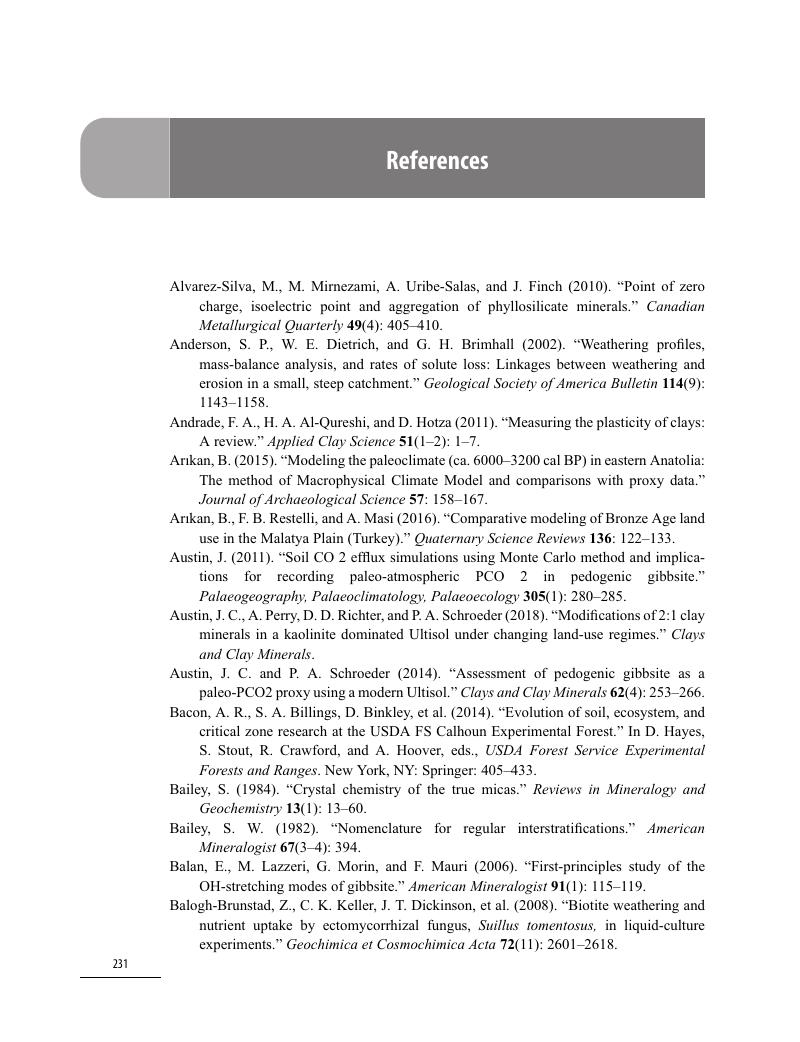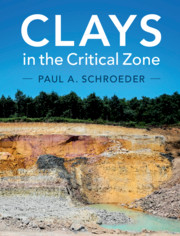Book contents
- Clays in the Critical Zone
- Clays in the Critical Zone
- Copyright page
- Contents
- Preface
- Acknowledgments
- 1 What Are Clays and What Is the Critical Zone?
- 2 History of Clay and Critical Zone Science
- 3 Characterization of Clays
- 4 Critical Zone Clay Geochemistry
- 5 Critical Zone Clay Sequences
- References
- Index
- References
References
Published online by Cambridge University Press: 04 August 2018
- Clays in the Critical Zone
- Clays in the Critical Zone
- Copyright page
- Contents
- Preface
- Acknowledgments
- 1 What Are Clays and What Is the Critical Zone?
- 2 History of Clay and Critical Zone Science
- 3 Characterization of Clays
- 4 Critical Zone Clay Geochemistry
- 5 Critical Zone Clay Sequences
- References
- Index
- References
Summary

- Type
- Chapter
- Information
- Clays in the Critical Zone , pp. 231 - 244Publisher: Cambridge University PressPrint publication year: 2018

